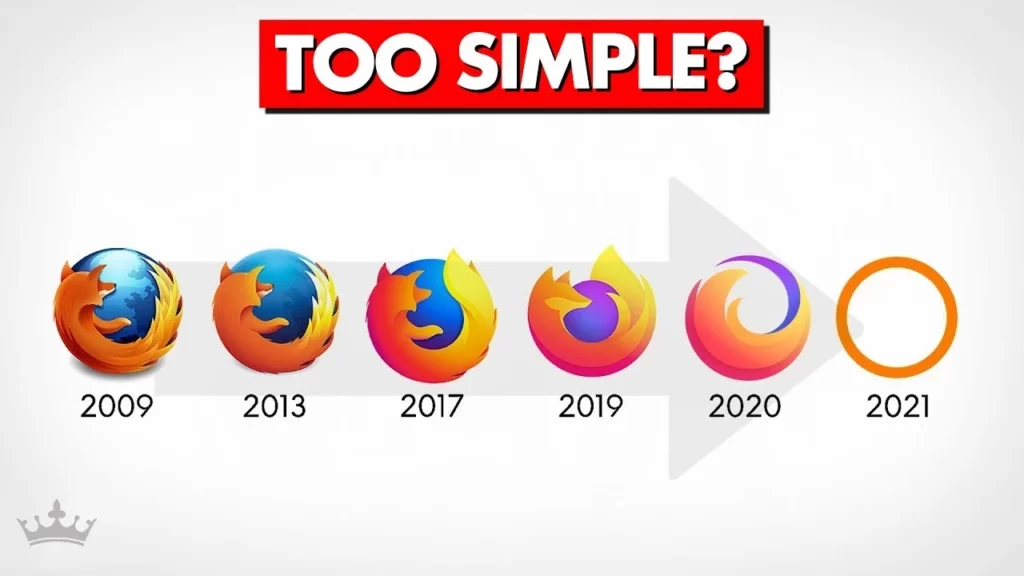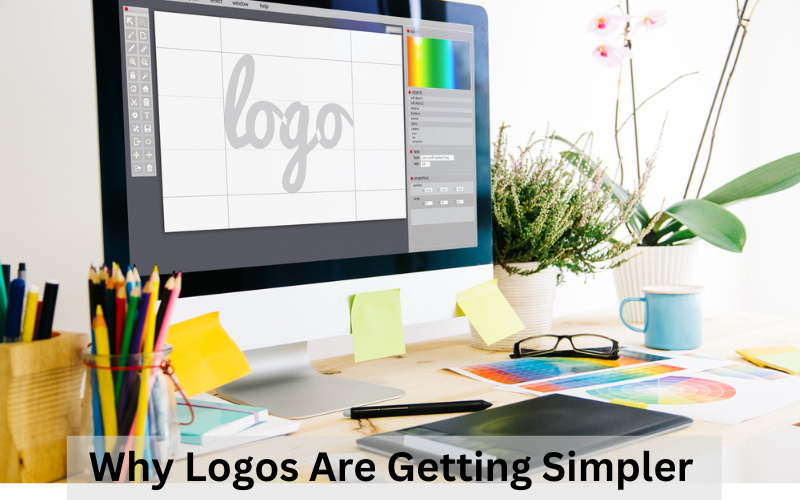Do you ever wonder why so many people like to use simple logos? As businesses embrace more subtle, minimalist aesthetics, we’ve seen an increase in simple logo design over the past few years. But why logos are getting simpler?
The visual representation of a company, brand, or product is known as a logo. They are made to be used on promotional materials like business cards, letterhead, and website graphics. A logo should be easy to remember, effective in promoting the business or product, and simple.
They can be made in a number of different ways, from straightforward illustrations to intricate 3D graphics. A well-designed logo can assist you in distinguishing your company from competitors and achieving your marketing objectives.
To create a logo many ways are utilized. The most common of these are icons, color schemes, fonts, and symbols. A successful business depends on a well-designed logo.
Table of Contents
Purpose of logo
https://www.instagram.com/p/CRtgsiFjOlh/?utm_source=ig_web_copy_link
Logos serve a significant purpose in our day-to-day lives. They are utilized for product and service identification. Sometimes, groups or organizations are even represented by logos. Although there are many different kinds of logos, the majority serve the same purpose: to assist people in determining what they are observing.
Why logos are getting simpler
Logos have been simplified for quite some time. This is probably because there are now thousands of them on products and services so that they don’t get overwhelmed. In the digital age, where users are more likely to see logos on social media posts and websites, the trend has continued. Companies are able to stand out and be remembered more easily as a result of this.
A company’s identity is frequently expressed through the design of its logo. Additionally, a company’s logo conveys a meaning or message through its products and services. Technology, for instance, is represented by Apple’s symbol of the letter “A” with a circle above it.
Reasons for simplify the logos

Logos has been simplified in numerous ways over time for a variety of reasons. The increasing use of technology and the desire to develop a more cohesive brand identity are two examples of the reasons for simplifying. A dislike of cluttered designs is one example of an aesthetic reason. Logos that are simplified are more likely to be remembered and can convey a message with fewer components.
Advantages
Simple logos actually have a lot of advantages over more complicated logos. Even though you might think that a logo with more details will tell your customers more about your brand, most people prefer something simple, clear, and powerful.
Simple logos have the following advantages:
Comfortable for eyes
A complex logo can be beautiful, and it can also overwhelm the viewer. Consumers are straining their eyes more than ever before by constantly glancing at various displays and screens.
Help of the digital landscape
The world is changing digitally at an amazing rate. The majority of people today spend a lot of time using electronic devices like smartphones and computers. As a result, businesses have also evolved to create their own online presence through website assets and social media.
It can be extremely challenging to guarantee that a complex logo appears flawlessly in all environments in this digital landscape. The thumbnails on your website can be very small, and the size of a company’s profile picture on the majority of social media platforms is limited.
Businesses are able to ensure that they are prepared for any digital environment by switching to a straightforward logo design.
Additionally, a logo that is less complicated can be more adaptable to a variety of online and offline platforms. You don’t have to worry about the image on your letterhead and your email signature reflecting different aspects of your brand design.
Suitable for tiny screens
A simple logo is also better suited to a world where we spend more time browsing from our smartphones. Companies need to make sure they can still convey a specific brand identity with a small number of pixels as screens get smaller.
A straightforward logo not only looks better on a mobile-friendly website but also makes it easier to create new brand assets like apps. Many organizations can utilize basic adaptations of their logo to make minuscule button-style application pictures.
Alternately, it would be nearly impossible to transform your logo into an app-friendly image if it contained an excessive amount of information.
How frequently should your logo be changed?
One of the most crucial aspects of a company’s branding is its logo. When shopping, they can assist customers in identifying products and help them associate a product with a particular company. Having said that, it is essential to update your logo on a regular basis to reflect changes in your company and the industry you compete in. Here are six suggestions for keeping your logo effective:
- It is always a good idea to establish a brand identity that is consistent throughout all of your marketing efforts. This means that your website designs and social media graphics should all use the same font, color, and design elements.
- Make it a point to regularly update your logo so that it matches the rest of your branding efforts. This includes updating web pages, creating brand-new profiles on social media, and incorporating new imagery into product packaging and print advertisements.
- Color can help your logo stand out more. Consider the color scheme and placement of your brand’s components when designing a new logo. For other design elements like product packaging and promotional materials, use your logo as a guide.
- Simpler is better. Keep the design simple when updating your logo. Don’t make it too complicated by adding too many elements or details. This can make your logo appear shabby and out of date.
- Consider utilizing a “word logo. The essence of your business can be effectively communicated through a word logo. Choose a word that best represents the name of your company as the main focus of the logo.
- Maintain a consistent color scheme. Choose a color that best describes your company. Red, for instance, is a great color for a logo because it symbolizes passion and strength.
Logo Design Future Since its humble beginnings in the late 1800s, logo design has come a long way. While there are numerous approaches to logo design, a few general principles must always be taken into account. A logo, for instance, needs to be straightforward and simple to comprehend. Logo design is constantly evolving in tandem with technological change. Logo designers all over the world have bright prospects in store! Logo design is a crucial aspect of branding, and it is likely that it will look very different in the future.
Conclusion:
We hope this article will assist you in answering the question, “Why logos are getting simpler?” Simple logos offer a number of unique advantages, such as the capacity to project a brand with greater self-assurance and a higher level of accessibility on digital platforms and devices.
Logos generally benefit from being simpler in today’s modern world, despite the fact that complexity has its place in certain aspects of brand and logo design.
FAQ:
What makes a great logo?
Your logo should stand out from other brands because it is unique. If you want to make a big impression on the viewer’s eye, use design elements that aren’t in style right now. When creating a distinctive logo, you will use the brand’s unique story as your guide.
Are logos meant to be straightforward?
A logo’s simplicity makes it easy to recognize, adaptable, and memorable. Without being “overdrawn,” good logos feature something unexpected or distinctive. The principle of memorability closely follows this one of simplicity.
Who first designed the logo?
When the Ancient Egyptians created hieroglyphics around 3200 BC, they were among the first people to use symbols. The Egyptians began incorporating grids into their designs around 1,000 years later in order to establish a set of consistent standards for their drawings.
Is designing logos a skill?
Even though some logo designers are expected to have a design degree, it is not always necessary. However, you may need to learn and improve your design skills beyond what you already have in order to become a professional logo designer.
Thanks for visiting our Blog want more amazing blog?



